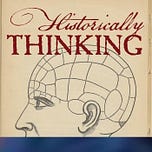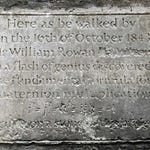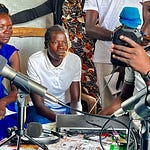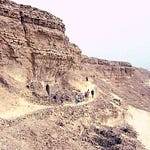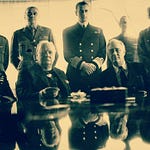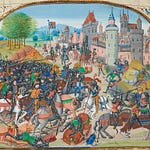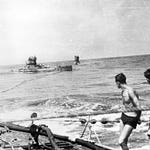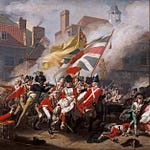Originally published on March 17, 2021 (Episode 200)
Introduction
This is the second of Historically Thinking’s yearlong series on the skills of historical thinking. In our first installment this year, Episode 196, we heard cognitive psychologist Daniel Willingham explain reading comprehension, without which none of the other skills really work. Today, in the podcast’s 200th episode, we’re going to tackle connecting.
If we put connecting into the form of a question, it would be something like: “How does this document [or any other source, from portraits to shoes to stone walls] fit into a bigger picture?”
Connecting joins together information from various sources, near and far from each other. It compares and contrasts, it corroborates testimony, it observes unexpected links. Connecting introduces the idea that history is first a way of seeing, before it can become a way of thinking.
There’s no better way to discuss connecting, or any other skill of historical thinking, than to consider an exemplar of that skill. If you were trying to craft a silver teapot, you wouldn’t want to just read a book about it. You’d want to watch a master craftsman at work, ask questions, and perhaps even try it yourself under their careful and experienced eye.
Today’s exemplar is the book The Ghost of Galileo…in a Forgotten Painting from the English Civil War, just published by Oxford University Press. Its author and our guest was J.L. Heilbron, Emeritus Professor of History at the University of California at Berkeley.
About the Guest
John Lawrence Heilbron was Emeritus Professor of History at the University of California at Berkeley, and Vice Chancellor Emeritus. A native of the Bay Area, he earned his AB and MA in Physics from Berkeley before completing his PhD in the History of Science under the direction of Thomas S. Kuhn. He served as Senior Research Fellow at the Oxford Museum for the History of Science and was an Honorary Fellow of Worcester College, Oxford.
His research ranged across the history of physics and astronomy, from Niels Bohr: A Very Short Introduction to the widely acclaimed The Sun in the Church: Cathedrals as Solar Observatories. In his retirement he divided his time between Berkeley and west Oxfordshire, where his local was the Rose and Crown in Shilton.
John Lawrence Heilbron died on November 5, 2023
For Further Investigation
J.L. Heilbron, The Ghost of Galileo…in a Forgotten Painting from the English Civil War (Oxford University Press, 2021)
J.L. Heilbron, The Sun in the Church: Cathedrals as Solar Observatories
J.L. Heilbron, Niels Bohr: A Very Short Introduction
Listen & Discuss
What connections stood out to you in this conversation? Leave your reflections in the comments — and share this episode with a friend who is learning to see history in new ways.

